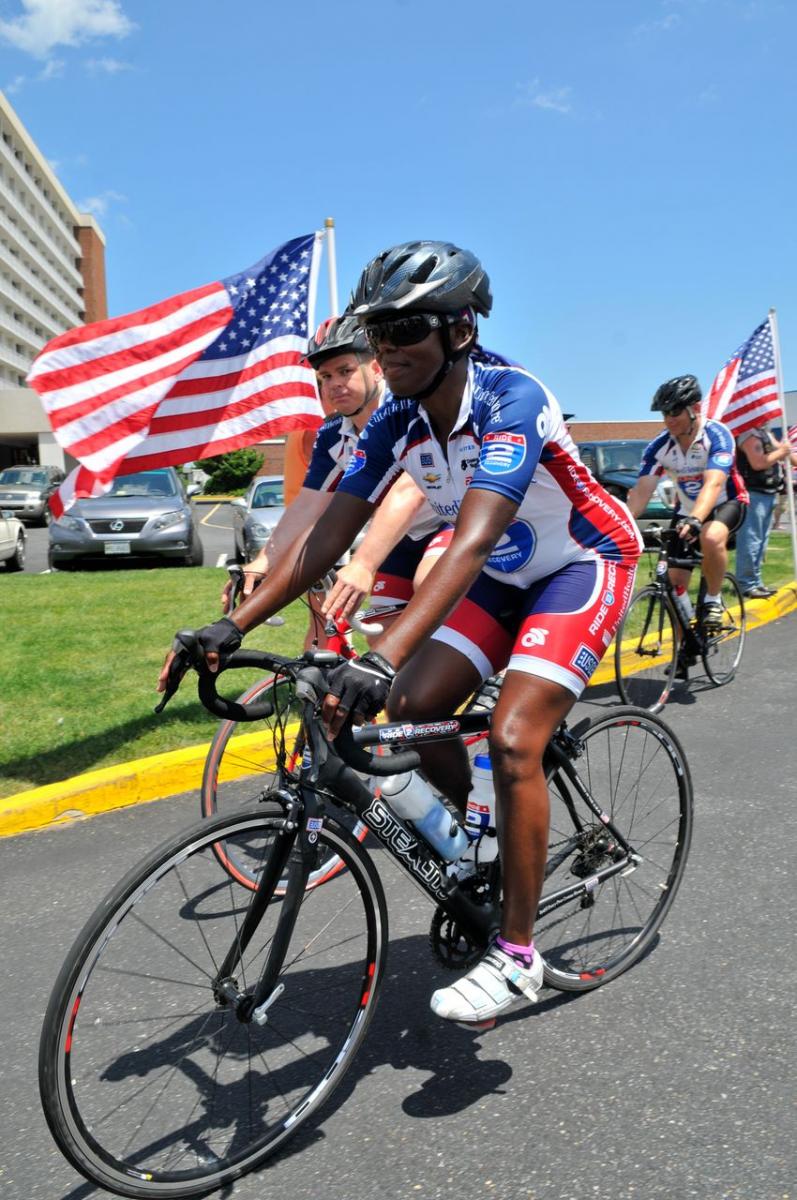DISCOVER YOUR LOCAL BICYCLING COMMUNITY
Find local advocacy groups, bike shops, instructors, clubs, classes and more!
Women’s Health: Kennetta Gunns
For Kennetta Gunns, bicycling was a dual pathway to better health. Returning from military deployment in 2007, the veteran faced both physical and mental challenges — and pedaled her way beyond those barriers thanks to a little help from cycling friends and Ride to Recovery.
This year, Bike to Work Week coincides with National Women’s Health Week. As we’ve showcased in the past, bicycling is a powerful tool to advance health and this week we’re sharing diverse stories from women who have tapped into biking as an avenue to wellness.
Here’s Kennetta’s story, which was originally published in our American Bicyclist magazine in 2013.
 When I returned from my first and only deployment in 2007, I learned I faced two challenges that would not allow me to deploy again: Snapping Hip Syndrome and Retinitis Pigmentosa.
When I returned from my first and only deployment in 2007, I learned I faced two challenges that would not allow me to deploy again: Snapping Hip Syndrome and Retinitis Pigmentosa.
The hip problems left me unable to run without pain and the fear of an unexpected fall. Retinitis Pigmentosa is a degenerative eye condition that causes the retinas to die. I have struggled with coming to terms with these diagnoses for five years now. I never knew that I really needed help dealing with it until I came to the Warrior Transition Unit.
When I arrived at Fort Hood, I was an extremely guarded person. Always a smile, but never a word of invitation to come into my world — and it seemed, the longer I stayed, the more I felt like I didn’t deserve to be there. I was not hit with any direct or indirect fire. I never watched one of my battle buddies go down. I caught a “cold” my first week in the sandbox and came home with aggravated conditions. My thought was “Who am I to claim the spot of a wounded warrior when there are so many others out there that could use more help?”
For months, I kept myself on the outside until I met Andi Talley. I owe her my sanity for introducing me to cycling. One day while we were supposed to be having fun and working as a team decorating our company, someone I didn’t know said something I didn’t like. It upset me so much that I walked out — angry and frustrated for joining in the “fun” in the first place. Andi stopped me from losing it completely that day — and invited me to join her on a bike ride.
We trained, and I struggled, for the Ride 2 Recovery Gulf Coast Challenge. Day One of that Challenge was a 77-mile day. I had never been “in the saddle” for that long in one day. It was painful and terrifying but finishing that day was amazing.
Finishing that week long ride has saved my life. I’ve learned that I have anxiety that causes me to isolate myself. It causes me to think and “hear” things that are not true. Cycling with Project Hero and R2R helps me to put things into perspective. I’m sure I’ll continue to struggle with worry and stress over many things, but, when I’m on the bike, I don’t have the time or the luxury to allow those worries to rule me. I can only think of one thing at a time. And if that thing is not on the road underneath me, THAT is not the time.
Cycling not only allows me to remain physically as fit as I have been for 17 years of military service but also encourages me to strive for emotional fitness. It took about five years to work myself into an emotional frenzy and four months of cycling to help me manage it. That’s a pretty nice tradeoff if I do say so myself!